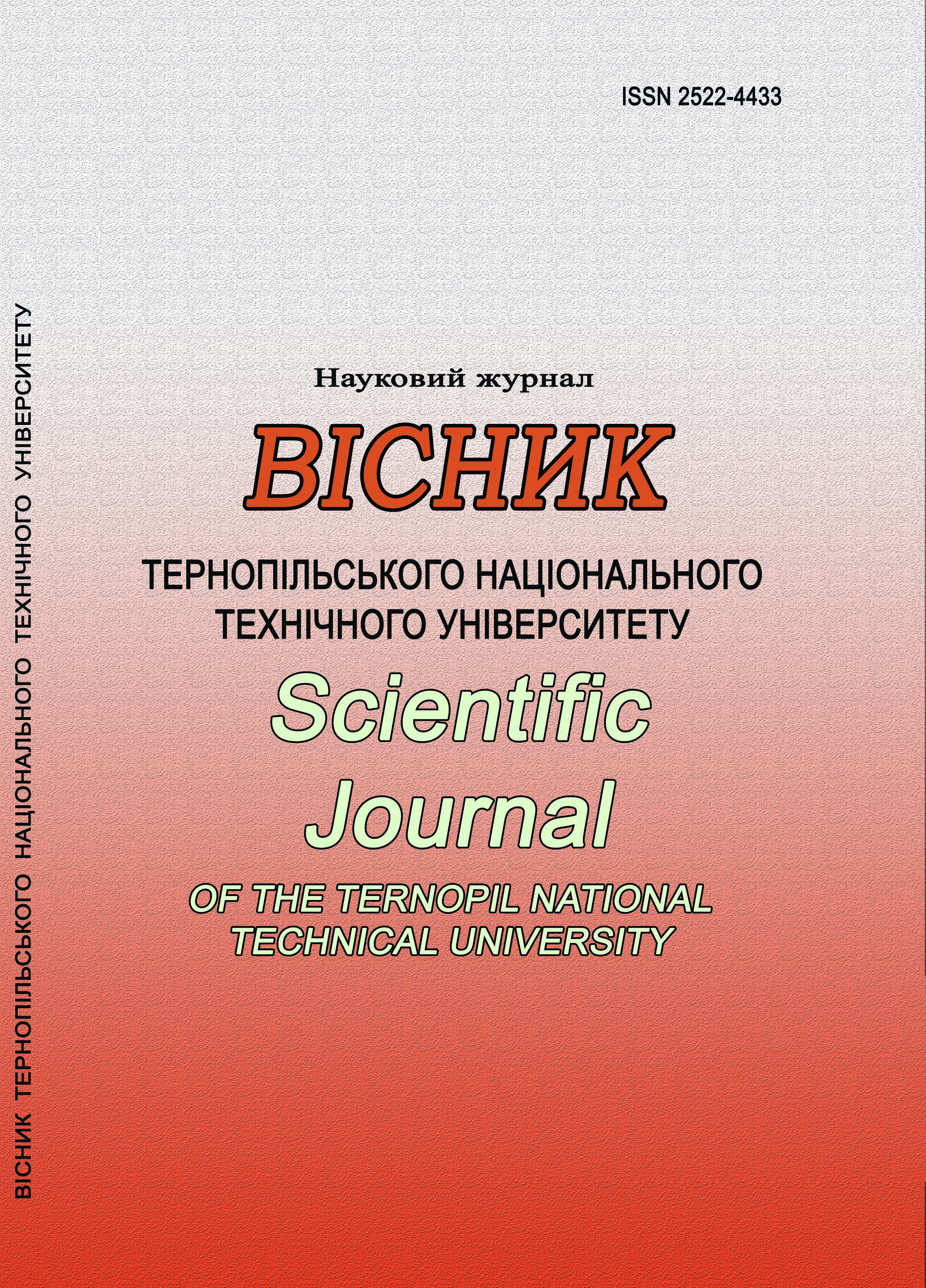Discrete wavelet transform denoising method efficiency evaluation for processing pulse signals with harmonic components
Main Article Content
Abstract
This article reviews the problem of parameter selection for denoising methods based on the Discrete Wavelet Transform (DWT) for processing geo-signals with various noise types and external interference, followed by evaluating the effectiveness in detecting recurring signal patterns. The study reviews the theoretical impact of denoising parameters, existing wavelet and decomposition level selection methods, publications on DWT applications in different fields, and the computational challenges of increasing decomposition levels for microcontrollers. Experimental results of DWT denoising application on field-gathered signals recorded in different environments, presented as average SNR changes for specific DWT parameter combinations. Comparison of results by decomposition levels showed gradual improvements in efficiency with certain wavelets and significant drops after specific levels in some cases due to the filtering of typical samples, which emphasizes the need to review DWT parameters only in the scope of specific parameter combinations. Notable anomalies in efficiency due to the non-stationary nature of signals and parameter resonance with noise or patterns were also observed, requiring further research. Based on the findings, the most effective parameter combinations for denoising the studied geo-signal were identified, with a particularly optimal combination of three decomposition levels, hard thresholding, and rbio3.3 wavelet, which preserved and even amplified signal energy while enabling the detection of typical fragments at distances of 120–100 meters
Article Details
Issue
Section

This work is licensed under a Creative Commons Attribution 4.0 International License.
References
1. Javadi M., Ghasemzadeh H. (2017) Wavelet analysis for ground penetrating radar applications: a case study. Journal of Geophysics and Engineering, vol. 14, no. 5, pp. 1189–1202. https://doi.org/10.1088/1742-2140/aa7303
2. Islam M. S., Pears R., Bacic B. (2018) A wavelet approach for precursor pattern detection in time series. Journal of Electrical Systems and Information Technology, vol. 5, no. 3, pp. 337–348. https://doi.org/10.1016/j.jesit.2018.03.003
3. Y. Yavorska et al. (2020) Evaluation of methods for determining abnormalities in cardiovascular system by pulse signal under psycho-emotional stress in dental practice. Scientific journal of the Ternopil National Technical University, vol. 100, no. 4, pp. 118–126. https://doi.org/10.33108/visnyk_tntu2020.04.118
4. Rodriguez-Hernandez M. A. (2016) Shift selection influence in partial cycle spinning denoising of biomedical signals. Biomedical Signal Processing and Control, vol. 26, pp. 64–68. Available at: https://doi.org/10.1016/j.bspc.2015.12.002. https://doi.org/10.1016/j.bspc.2015.12.002
5. S. Shridhar et al. (2019) Denoising of ECG Signals Using Wavelet Transform and Principal Component Analysis. SSRN Electronic Journal. Available at: https://doi.org/10.2139/ssrn.3356368.
6. X. Zeng et al. (2024) Study on Noise Reduction of Acoustic Emission Signals based on Improved Wavelet Thresholding. Scientific Journal of Technology, vol. 6, no. 3, pp. 1–9. https://doi.org/10.2139/ssrn.3356368
7. P. Li et al. (2021) Denoising of LCR Wave Signal of Residual Stress for Rail Surface Based on Lifting Scheme Wavelet Packet Transform. Coatings, vol. 11, no. 5, pp. 496. Available at: https://doi.org/10.3390/coatings11050496.
8. N. Liu et al. (2020) Research on Wavelet Threshold Denoising Method for UWB Tunnel Personnel Motion Location. Mathematical Problems in Engineering, vol. 2020, pp. 1–14. https://doi.org/10.3390/coatings11050496
9. C. Tan et al. (2014) An Integrated Denoising Method for Sensor Mixed Noises Based on Wavelet Packet Transform and Energy-Correlation Analysis. Journal of Sensors, vol. 2014, pp. 1–11. Available at: https://doi.org/10.1155/2014/650891.
10. N. A. Yusoff et al. (2016) Denoising technique for partial discharge signal: A comparison performance between artificial neural network, fast fourier transform and discrete wavelet transform. IEEE International Conference on Power and Energy (PECon), Melaka, 28–29 November 2016. 2016. Available at: https://doi.org/10.1109/pecon.2016.7951579.
11. R. Chu et al. (2022) An adaptive noise removal method for EEG signals. Journal of Physics: Conference Series, 2414, 012007.
12. ATmega328P 8-bit AVR Microcontroller with 32K Bytes In-System Programmable Flash Datasheet [Electronic resource]. Available at: https://ww1.microchip.com/downloads/en/DeviceDoc/Atmel-7810-Automotive-Microcontrollers-ATmega328P_Datasheet.pdf.https://doi.org/10.1088/1742-6596/2414/1/012007
13. Vanchak V., Melnychuk S. (2024) Influence Assessment of Distance to the Source of Pulse Signals With Harmonic Components on the Temporal Distortion of Their Forms. Advances in Cyber-Physical Systems, vol. 9, no. 1, pp. 61–67. Available at: https://doi.org/10.23939/acps2024.01.061.
14. Vanchak V. S., Melnychuk S. I., Manuliak I. Z. (2023) Correlation Functions Application Effect on Periodic Pulse Signal with Harmonic Elements. Visnyk of Vinnytsia Politechnical Institute, vol. 169, no. 4. P. 46–53. https://doi.org/10.31649/1997-9266-2023-169-4-46-53
15. Vanchak V., Melnychuk S., Manuliak I. Efficiency of low-pass filters based on FFT for SNR improvement of periodic impulse signals with harmonic components. materials of XII-th scientific and practical conference "Problems of informatics and computer technologies": materials of scientific and practical conference, Chernivtsi, 10–12 November 2023. Chernivtsi, 2013. P. 71–73.
16. Luo Y., Li Z., Wang H. (2017) A Review of Online Partial Discharge Measurement of Large Generators. Energies, vol. 10, no. 11, pp. 1694. Available at: https://doi.org/10.3390/en10111694.
17. Singh A. (2016) Comparative Analysis of Gaussian Filter with Wavelet Denoising for Various Noises Present in Images. Indian Journal of Science and Technology, vol. 9, no. 1, pp. 1–8. https://doi.org/10.3390/en10111694
18. Srivastava M., Anderson C. L., Freed J. H. (2016) A New Wavelet Denoising Method for Selecting Decomposition Levels and Noise Thresholds. IEEE Access, vol. 4, pp. 3862–3877. Available at: https://doi.org/10.1109/access.2016.2587581. https://doi.org/10.1109/ACCESS.2016.2587581
19. C. He et al. (2015) A New Wavelet Thresholding Function Based on Hyperbolic Tangent Function. Mathematical Problems in Engineering, vol. 2015, pp. 1–10. Available at: https://doi.org/10.1155/2015/528656.
20. Li Y., Li Z. (2020) Application of a Novel Wavelet Shrinkage Scheme to Partial Discharge Signal Denoising of Large Generators. Applied Sciences, vol. 10, no. 6, pp. 2162. https://doi.org/10.3390/app10062162
21. C. F. F. C. Cunha et al. (2015) A new wavelet selection method for partial discharge denoising. Electric Power Systems Research, vol. 125, pp. 184–195. Available at: https://doi.org/10.1016/j.epsr.2015.04.005.
22. Altay Ö., Kalenderli Ö. (2015) Wavelet base selection for de-noising and extraction of partial discharge pulses in noisy environment. IET Science, Measurement & Technology, vol. 9, no. 3, pp. 276–284. https://doi.org/10.1049/iet-smt.2013.0114
23. A. T. Carvalho et al. (2015) Identification of partial discharges immersed in noise in large hydro-generators based on improved wavelet selection methods. Measurement, vol. 75, pp. 122–133. https://doi.org/10.1016/j.measurement.2015.07.050

